I didn’t make it to Fourth of July Canyon for its spectacular fall foliage show this year.
I’d planned to hike in the golden aspens above Santa Fe in September, but that day was Day 5 of a record-setting cold and rainy spell.
Luckily, when I look up in November and realize I need an eyeful of fall color before it’s too late, my city provides.
Albuquerque’s amazing irrigation ditches are guarded by huge, stately cottonwoods whose leaves blaze yellow each October and November before meeting their end.
On Sunday, we drove south down Second Street to Valle de Oro, the first urban wildlife refuge in the Southwest. It’s just a few years old; our previous visits here had to be timed to the one day it was open per month. Now the gates are open daily.
Valle de Oro was a dairy farm before it was a wildlife refuge. Its green fields attract geese and sandhill cranes, while the ditches steering Rio Grande water through the property beckon ducks.
From the moment we stepped onto the ditch, the cottonwoods’ dancing yellow leaves filled our eyes. But we wanted to be among them, not just looking at them. So at the first opportunity to cross the ditch into the Rio Grande bosque, we peeled off.
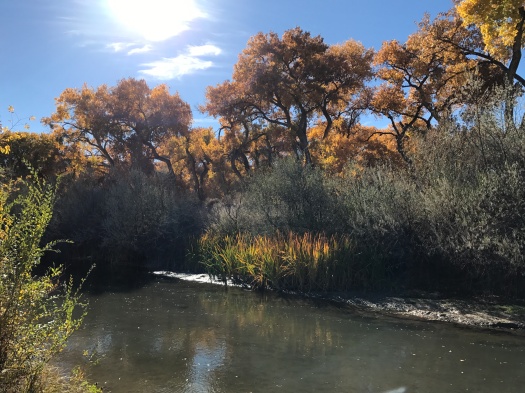
A strong breeze blew through the cottonwoods, and they hummed in the wind. Golden light met golden leaves and multiplied.
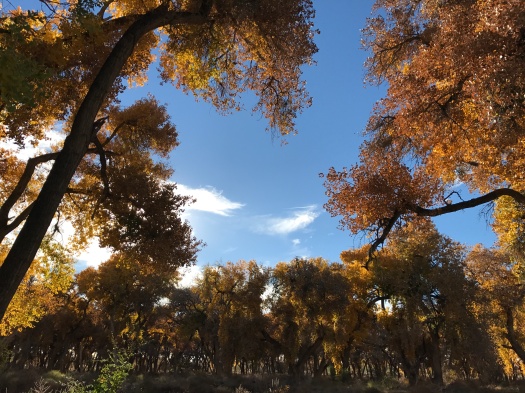
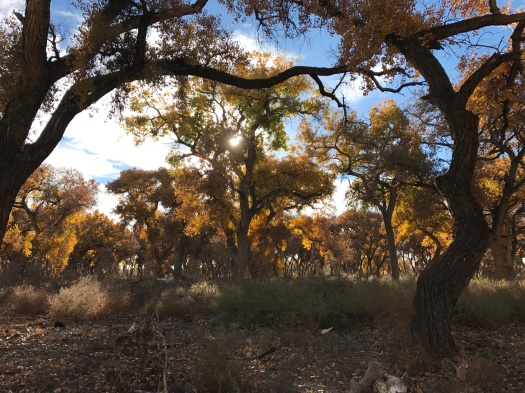
A sandy jeep trail led us through waving marsh grasses and reeds to the river, then looped around the bosque.
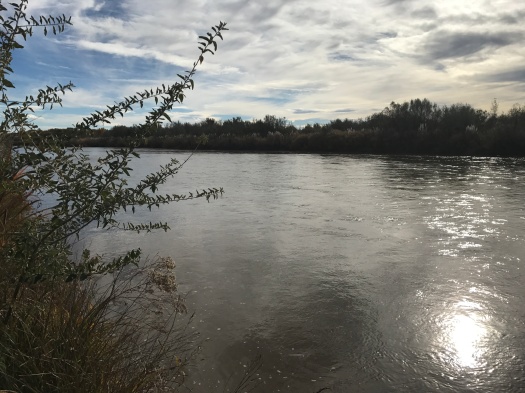
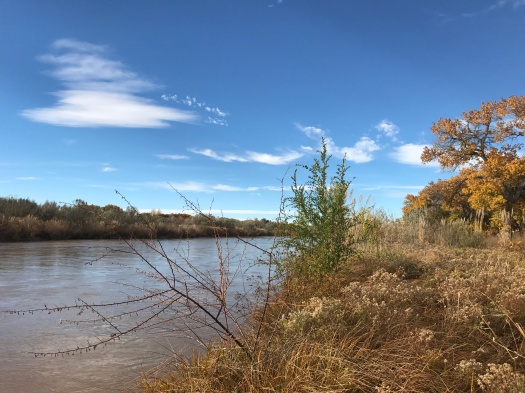
A woman from San Antonio walking her dog could not believe her eyes. She asked us lots of questions about the ecosystem that produced this place, and the irrigation ditches. She was staying in Santa Fe, but Valle de Oro had made the biggest impression on her so far. Score one for Burque.
We walked around and over giant cottonwood limbs that still had living leaves on them, and must have crashed to the ground just weeks ago, maybe even days.
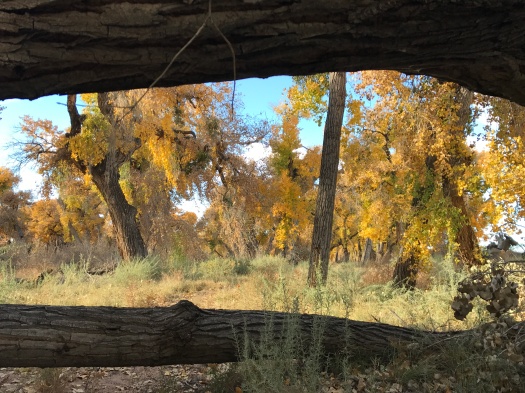
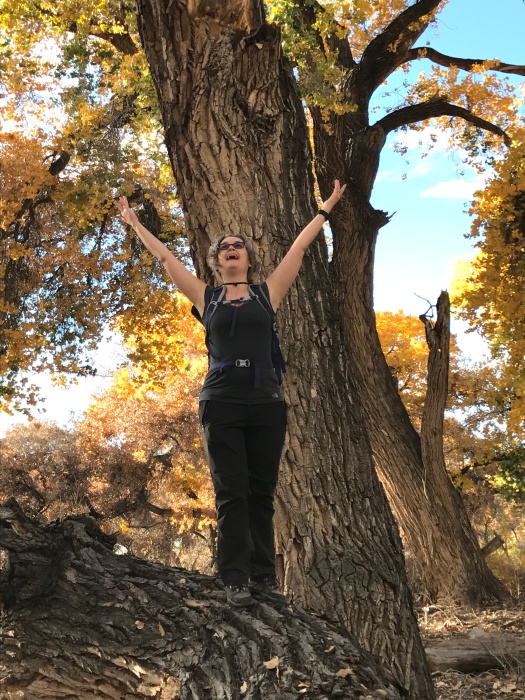
Crows swung overhead. Then geese began to wing across the river toward us, squawking like banshees. The burbles of sandhill cranes in the field drifted on the wind.
The sun fell lower, temporarily muting the vivid colors. The Sandia and Manzano mountains glowed in the distance as we walked back along the ditch.
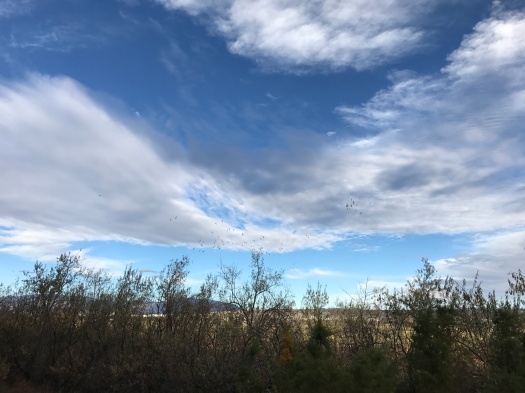
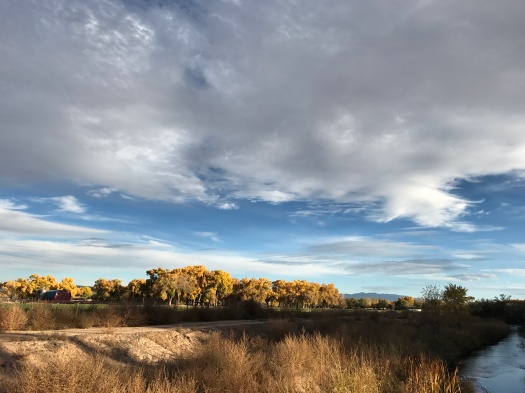
As Robert Frost so aptly put it, nothing gold can stay. If you want to see this sight in 2017, you’d better hustle.
Or, if you’re still dragging your feet, Socorro probably has a couple more weeks of yellow in the bosque.
Hike length: 4.5 miles
Difficulty: easy
Trail traffic: moderate
Wildlife spotted: sandhill cranes, geese, hawk, duck, bluejay, sparrows, grasshoppers, butterflies, dragonflies
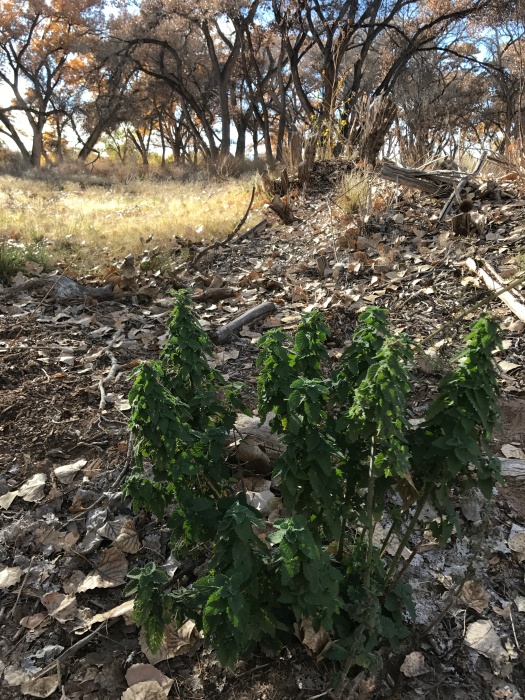
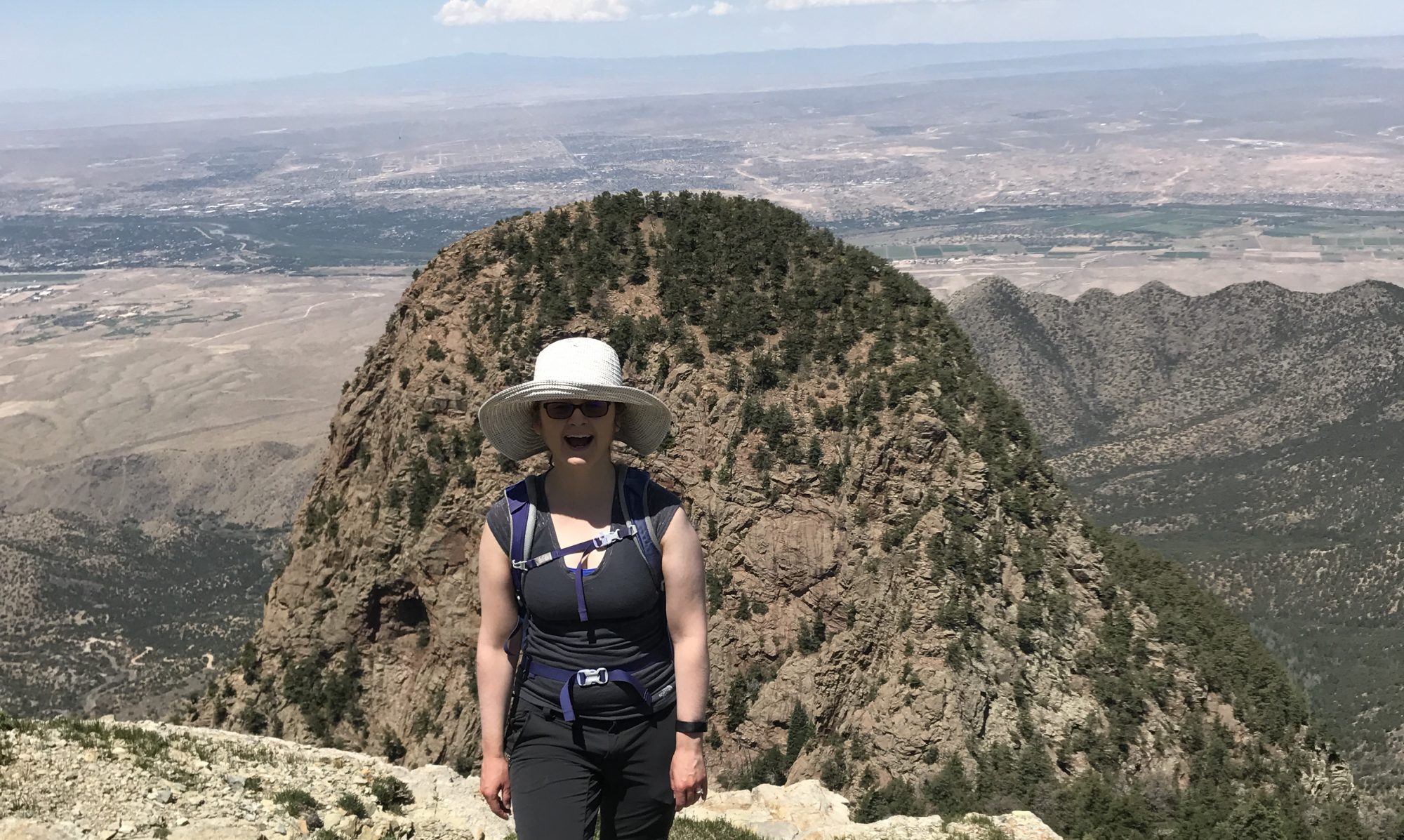

4 Replies to “Last call for fall at the Southwest’s first urban wildlife refuge”